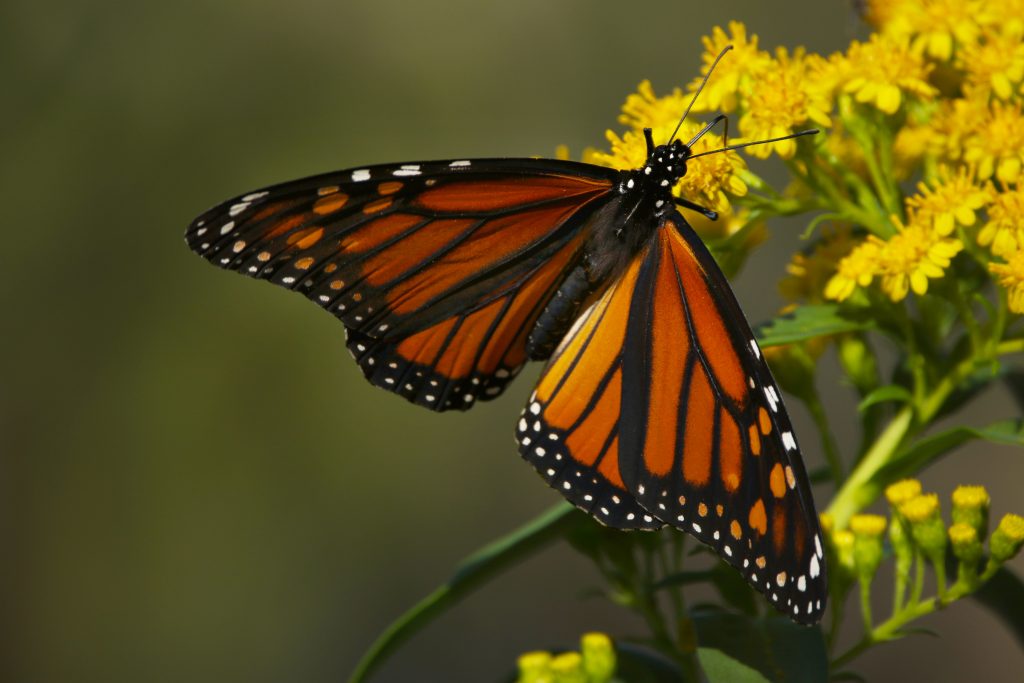The U.S. Fish and Wildlife Service delayed its decision about whether to list the monarch butterfly as endangered or threatened until December 2020 — 18 months later than the original deadline of June 2019.
Because the original deadline resulted from a litigation settlement, this extension had to be approved by federal courts and the other parties to the litigation. While certainty about a regulatory decision of this scope is always beneficial, this mutually agreed upon delay creates an opportunity that shouldn’t be missed.
Here’s what farmers, ranchers and their partners need to know about how the delay will impact monarch conservation efforts.
More data for decision-making
The additional time will allow FWS to consider two more sets of overwintering population numbers — the most recent numbers that were released in spring 2019 and next winter’s count that will be released in spring 2020. These additional datasets will allow the agency to more accurately assess the overall trajectory of the species.
The eastern population increased in 2018, but the overwhelming evidence shows a decline of 90% from historic levels that is correlated with the loss of milkweed habitat in the Midwest. Last year’s population increase was attributable to near perfect weather conditions that are unlikely to align again. This year, monarchs left Mexico overwintering sites three weeks early, and are already in Canada much earlier than normal.
The western population plummeted to record lows in 2018. While the factors driving that steep decline remain uncertain, the long-term evidence indicates that land conversion of overwintering sites on the coast, pesticide exposure, climate change, parasites, disease and a reduction in breeding and nectar habitat are all contributing to the near-extinction status of the western migratory population.
This means that despite the delay, there’s still a strong possibility that population studies will support a warranted listing for the monarch.
Opportunity to show that voluntary conservation works
Monarch conservation stakeholders can scale up conservation work over the next two breeding seasons to greatly expand available habitat and give the monarch the best chance possible to avoid listing.
EDF is collaborating with agriculture associations in the Corn Belt and California’s Central Valley and ranchers in Texas to voluntarily enhance milkweed and nectar plant habitat and increase the breeding success of monarchs along their migratory path. Now is the time for farmers and conservation partners to expand the pace and scale of habitat growth for the monarch butterfly Share on X
Expanding breeding and nectaring habitat is essential for the long-term survival and overall resilience of the species, and habitat quality and availability are key factors in FWS’ ultimate decision.
Multiple benefits will follow
Conservation efforts also have benefits for farmers and ranchers beyond sustaining the monarch and avoiding an endangered species listing decision.
Restoring patches of native grassland improves soil health, reduces erosion, filters nutrients, improves water quality, and provides habitat for other pollinators and birds like pheasants. This means that monarch habitat creation — especially on acres that are aren’t commercially viable for farming or that are already dedicated to conservation practices — is a no-regrets investment no matter what FWS decides.
The delay should not be a signal to rest on previous accomplishments. EDF and partners are rolling up their sleeves to expand the pace and scale of habitat growth while we still have the chance.











5 Comments
I have been raising monarchs since 9-11 when I found the first ones. Last year I had absolutely none visit my milkweed and lay eggs. This is predicted for 2019 also. There is a problem.
Hi there to every one, it’s really a good for me to go to see this site,
it consists of helpful Information.
The decline of monarch butterflies has been on going for more than a decade. Why EPA wants to wait longer makes me skeptical of intention. Especially w th careless attitude and killing of the EPAs long program of protecting all wildlife. Nothing th trump admi. Is doing gives me confidence that they will do anything to help. Are they waiting for th collapse of the whole species and bees?????? Then a shrug and oooops, too late. I think this is stalling until after th elections, thn NOTHING!!!!!! STALLING AND BLOCKING IS WHAT TRUMP AND RETHUGS DO BEST!!!!!! DON’T FORGET FRACKINGS HORRID POLLUTION OF GROUND, AQUIFERS, AIR. ITS MAKING WORKERS AND PPL LIVING NEAR SICK. WHAT MAKES PPL SICK KILLS ANIMALS. BUTTERFLIES, INSECTS, AMPHIBIANS EVEN QUICKER. OUR ????????SEE!!!!!!!
You are all full of ?, this waiting crap is full of ?. Why wait when the all the butterfly’s need HELP NOW and THE BEE’S need help also, SOget off your BUTTS and do what is right!!!!???♥️?????✝️???????
Protect the Monarch!